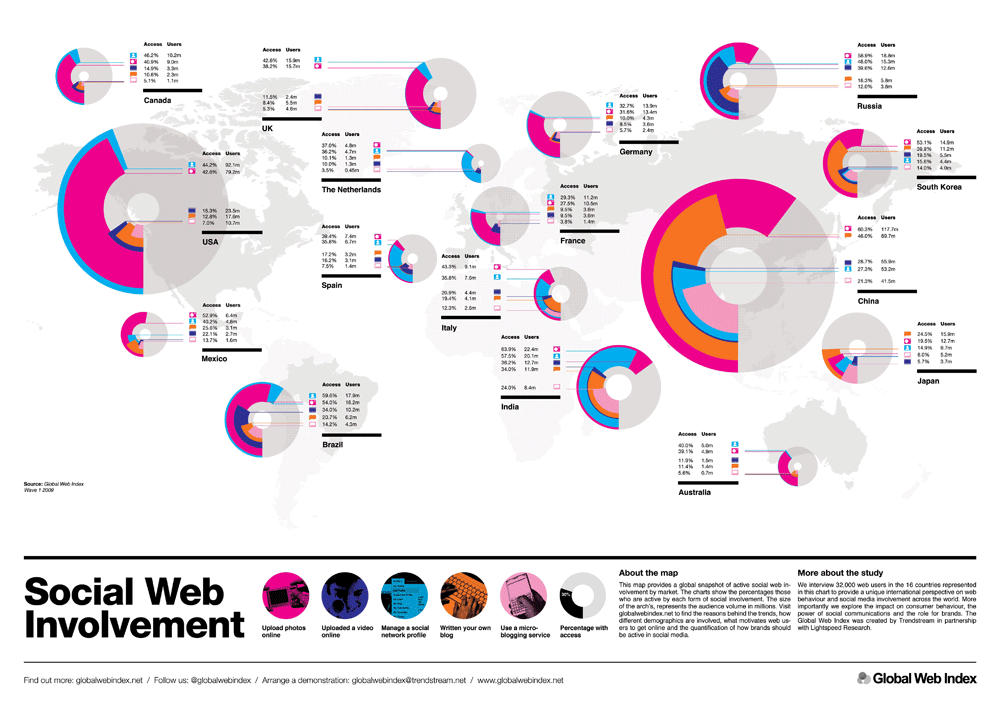
via globalwebindex.net
Above you can see a world map of social media involvement. The study was conducted by Trendstream, a research consultancy. The map shows the popularity of different social media services around the world. Trendstream provides total user numbers and the national penetration rates.
What’s the most common pattern of social media engagement?
- Managing a social network profile
- Uploading photos
- Uploading videos
- Writing a blog
- Using a microblogging service
It is interesting to note that managing social network profiles and uploading pictures seem to be the more common activities regarding social media engagement. Many countries have penetration rates approaching or even exceeding 50 percent. Uploading videos, writing blogs, and using microblogging services are clearly niche activities with the majority of adoption rates being well below 20 percent.
What seems to stand out?
- Japan’s low overall engagement is due to the high utilization of mobile devices, which have not been included, according to the authors. I feel this is a weakness of the study.
- India leads the table in terms of photo uploads.
- Brazil displays the highest rate of users maintaining social network profiles.
- Russia has the highest rate of video uploads.
- China counts the highest amount of bloggers.
I would be very interested in finding out why certain technologies are particularly popular in one country, but lag behind significantly in others. Why is blogging so popular in China? What’s the reason behind Brazil’s active usage of social networks? If you have any ideas or suggestions, please feel free to leave a comment or email me.


